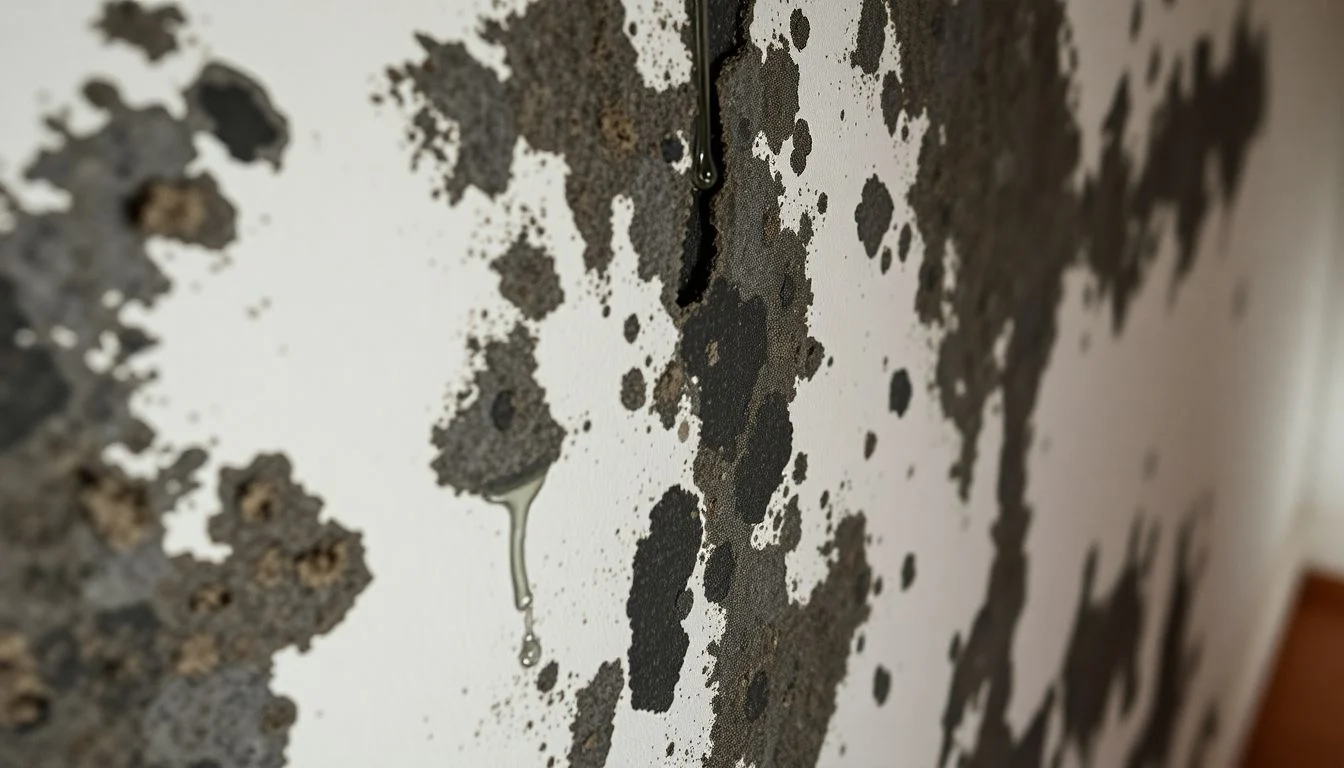Mould exposure can lead to serious health issues. According to the CDC, over 20% of the world's asthma cases relate to mould exposure. Understanding the dangers highlights the need for effective mould remediation. This guide explores the factors that influence mould removal costs, giving you a clearer picture of what to expect.
Factors Affecting How Much Does Mould Removal Cost
Type and Extent of Mold Infestation
The cost of mould removal can vary significantly based on the type and extent of the infestation.- Surface vs. Hidden Mould: Surface mould is easier and cheaper to remove than hidden mould. Hidden mould often requires invasive procedures, raising costs.
- Severity Levels: Mild infestations can cost around £500, while extensive mould requiring significant remediation can run into thousands.
- Types of Mould: Black mould, for example, poses unique challenges and can be more expensive to eliminate than other mould types.
Size of Affected Area
The size of the contaminated area plays a critical role in determining costs.- Cost per Square Foot: Most contractors charge between £10 and £25 per square foot for mould remediation.
- Impact of Area Size: Smaller infestations may cost around £300, while large outbreaks can easily exceed £2,000.
- Real-World Examples: A bathroom with minor mould could incur lower costs compared to a basement with extensive mould growth.
Location of Mold Growth
Where the mould is located also affects pricing.- Hard-to-Reach Areas: Mould in attics or crawl spaces can increase labour costs due to accessibility issues.
- Sensitive areas: Areas like kitchens or bathrooms often need more care, raising overall costs.
- Expert Insights: A thorough inspection is crucial to assess hidden mould, affecting overall costs.
Types of Mould Removal Services and Costs
DIY vs. Professional Mold Remediation
Understanding the difference between DIY and professional help is vital.- Cost Comparison: DIY methods may cost £50 for supplies, while professional services could start at £500.
- Risks of DIY: Without expert knowledge, you may miss hidden mould, leading to recurring issues and costs.
- When to Use Professionals: If mould covers more than 10 square feet, professional intervention is typically necessary.
Specialized Services
Certain situations may require specialised services, impacting overall costs.- Technical Remediation: Techniques like HEPA filtration may raise costs by £100 to £400.
- Additional Services: Services such as air quality testing can add £200 or more to your bill.
- Examples of Needs: If your home has significant mould growth, specialised cleaning for air ducts may be necessary.
Finding Reputable Professionals
Choosing the right professional is essential.- Importance of Credentials: Always select licensed and insured mould remediation experts.
- Tips for Selection: Look for certifications, positive reviews, and transparent pricing.
- Quote Comparison: Getting multiple quotes can help in finding the best value for your money.
Hidden Costs Associated with Mould Remediation
Testing and Inspection
Before removing mould, proper testing can prevent unexpected costs.- Testing Costs: Professional mould testing can range from £250 to £600.
- Importance of Testing: Identifying mould types and locations helps in effective remediation.
- Real-World Example: Many homeowners face additional costs due to undetected mould.
Structural Repairs
Post-remediation, structural issues may need addressing.- Repair Costs: Repairing water damage can add £500 to £5,000, depending on severity.
- Examples of Repairs: Replacing drywall or damaged wood may be necessary after mould removal.
- Expert Opinion: Addressing the root cause of mould growth is essential for long-term prevention.
Disposal Fees
Disposal of mould-contaminated materials adds yet another layer of costs.- Disposal Costs: Fees for disposing of contaminated material can exceed £100.
- Regulatory requirements: Proper disposal methods often involve additional expenses.
- Minimising Costs: Hiring a company familiar with local regulations can reduce these fees.
Mold Prevention Strategies: Saving Money in the Long Run
Moisture Control
Effective moisture control can significantly lower costs.- Controlling Humidity: Maintaining humidity levels below 60% can prevent mould growth.
- Cost-effective Strategies: Install dehumidifiers or proper ventilation systems to reduce moisture.
- Expert Advice: Regular monitoring can help in avoiding future infestations.
Regular Cleaning and Maintenance
Routine maintenance prevents mould from taking hold.- Cleaning Importance: Regularly clean areas prone to mould, like bathrooms and kitchens.
- Practical Tips: Use mould-resistant products for paints and fixtures.
- Long-Term Savings: Consistent upkeep minimises the chances of costly remediation.
Addressing Water Leaks Promptly
Quickly dealing with leaks can save you significant costs.- Quick Responses: Addressing leaks immediately can prevent extensive mould growth.
- Cost Comparison: Early intervention may cost a few pounds versus thousands for major remediation.
- Identifying Leaks: Regularly check under sinks and around appliances for signs of leaks.
Getting the Best Value for Your Money
Negotiating with Contractors
Learn how to get the best deal on mould remediation.- Negotiation Strategies: Don’t hesitate to discuss pricing with contractors.
- Multiple Quotes: Always seek several quotes to find competitive pricing.
- Ask the Right Questions: Clarify what each quote includes for better comparison.
Financing Options
Consider financing options to manage costs effectively.- Financing Availability: Many companies offer financing plans to help with upfront costs.
- Tax Incentives: Some homeowners may qualify for tax deductions related to mould remediation.
- Affordable Financing: Research local resources that provide affordable options.
Insurance Coverage
Insurance can offset costs associated with mould removal.- Policy Review: Check if your homeowners policy covers mould-related damages.
- Filing Claims: Be prepared with documentation if filing an insurance claim.
- Understanding Coverage: Knowing your coverage can prevent unexpected expenses.

